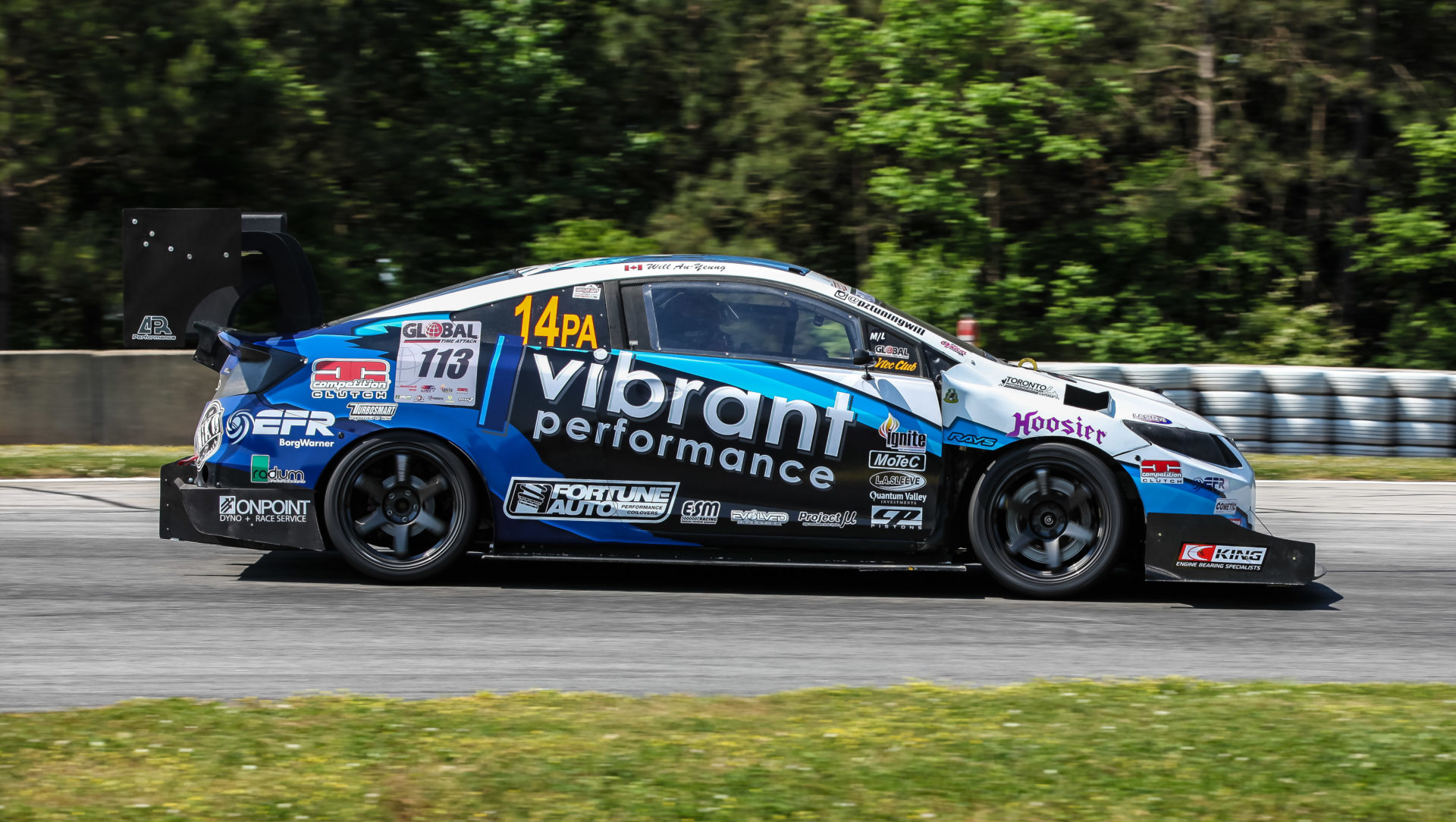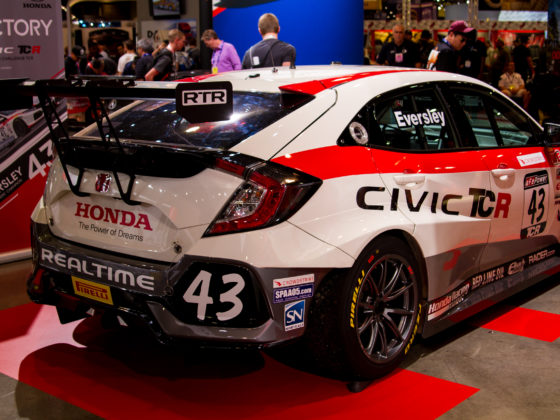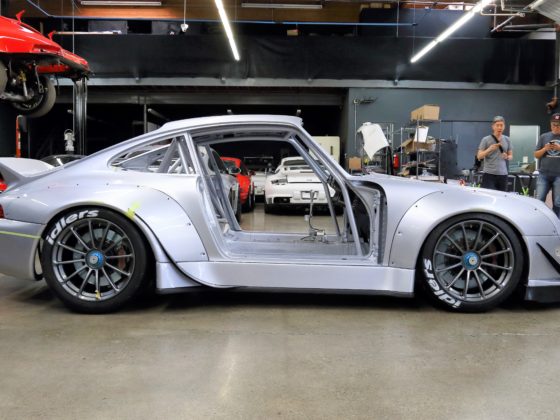
The geometry of the end part of the front wing was determined by using CFD. However, CFD was only used on the end tip of the front wing and was the airfoil element only.
The analysis did not include the whole car whose flow field can influence how the individual elements function greatly. This is an example of how some data is better than no data.

The splitter part of the front wing has a kick up which helps reduce pitch sensitivity. If the front of the car is subject to dive, the kick up will still allow flow to the rear diffuser so it will continue to work to some extent.

The back part of the side elements shows that the front wing has an airfoil shape as well as a diffusing area. Note the vortex generator on the ends of the end plates. A strong vortex here will travel down the side of the car and help prevent air from curling under the car where it can interfere with the function of the rear diffuser.

Splitters work by trapping stagnation pressure caused by air slowing down when it hits the front of the car creating a positive pressure differential between the top of the splitter and the bottom of the car.
Since we are talking about small differences in pressure spread over a large area, small air leaks can greatly reduce the efficiency of the splitter. The PZ splitter uses this vertical surface and rubber seals to prevent air leaks here. Even a small air leak can reduce splitter effectiveness by 25% or more.

Inboard of the bodywork there is a diffuser that takes advantage of the low-pressure zone in the wheel wells and the pumping action of the front wheels to create more front downforce.

One thing that few people realize is that there is only a few psi difference between the top and bottom surfaces of a cars aero panels and sealing against air leaks is critical and they often ignore this.
PZ takes concepts from higher level GT cars and completely seals the wheel wells with these carbon tubs to help get as much downforce as possible.




14 comments
I’ve been waiting for a Motoiq spotlight of this car!
“Even a small air leak can reduce splitter effectiveness by 25% or more.”
That’s a surprising amount!
The parts used in this car is really top notch from the Motec ECU, Antigravity RS-30 Battery, and carbon fiber molded front wing with complex 3 dimensional elements-some of the best design I’ve seen on a FWD unibody time attack car in my opinion.
another important thing to know about traction control / boost control, is that boost control is tied to throttle position. at part throttle boost targets are lower than full throttle making throttle modulation much easier / actually possible… small engine and big turbo usually mean the throttle is more or less and on/off switch, giving you 100% power even at part throttle.
question about the swan neck wing mounts. given that these high downforce wings usually have huge endplates, and since the mounts to the deck of the wing cause it to lose efficiency… why not do away with the deck mounts altogether and mount the wing by the end plates?
I have wondered about this too. Any aero experts here?
Yes, endplate mounts should be optimal. It is what you see on LeMans racecars. While it is very difficult to get the best aero config out of a FF, or AWD vehicle, you can look at DTM cars for ideas.
One of the best TA designs I have seen lately is the Escort Evo, in the SST competition. Sean from ‘thenaritadogfight.com’ just did an article on it. I can’t post links here, but it is worth a look. Unfortunately, the engine spun a rod bearing in competition. Better luck, next time.
I do wonder if somebody is going to invest in a MR platform for TA, because the potential downforce levels are far greater than any other chassis configuration. I mean, if Porsche is willing to rebadge a Cayman as a 911 RSR, you know it is for a good reason.
I always felt that an FR chassis in a production based car has the most potential to make the most downforce.
so do you have any sort of credentials that make actually make you any sort of expert on the subject? no offence if you do, but you don’t sound like any more expert on the subject than I am… and most of my “expertise” on aero comes from reading articles like this or listening to podcasts with Andrew Brilliant (an actual aero expert)…
Porsche didn’t “rebadge a Cayman as a 911 RSR” for aero reasons as the car kept the same general shape as when it was rear engine, they did it for the weight distribution.
Mike,
The guy responsible for William’s aero is Alex. He’s the owner of Spage Sport. (he has an Instagram account).
Get in touch with him and ask him. Very nice guy!
Obviously, I don’t know the TA rules off the top of my head. But, you work so hard to create downforce, and lose it all when you don’t have rigid side skirts. During the heyday of DF in F1, they had sliding side skirts with titanium edges (to minimize wear), which actually made contact with the ground plane.
“Due to the increased level of cornering speeds in Formula One during the 1979 season – which led to lap times some 6 seconds quicker than in previous years – the FIA decided to introduce a mandatory flat underside and banning the side skirts for the F1 cars.”
“Using inverted wing shapes within the sidepods and large side skirts that created a phenomenal amount of downforce. The Lotus 78/79 was the class of the field in the 1978 season (reliability was a major issue in the previous year) winning 8 out of the 16 races, with Chapman continuously evolving the concept through the year. In fact, the car was so good that it led Mario Andretti to comment, “Its like it’s painted on the road.””
“The evolution of Ground Effect on the Lotus 78 came about by accident. Peter Wright was at Imperial College, London, testing out the idea of putting water radiators in the leading edge of the side-pods. In a bid to try and improve on the unsuccessful Lotus 77, Wright was using a wind tunnel with a rolling road, a novelty at the time. However, the instrumentation began to show some unrepeatable results. Closer examination showed that the side-pods on the model were sagging, and as they got closer to the floor of the wind tunnel, the downforce increased.That indicated two things: (1) that the side pods had started to generate downforce, and (2) that it had something to do with the gap between their edges and the ground.
Wright then proceeded to cut up bits of cardboard, extending the side-pods right down to the ground – the downforce level doubled. This accidental discovery showed the importance of maintaining an air-tight seal along the bottom of a car with profiled side-pods, and resulted in the successful Lotus 78 of 1977.”
This sort of side skirt is illegal.
I assume it is a rule against a ‘moveable aerodynamic device.’
There are nylon brush side skirt designs, that are flexible, but technically not ‘moving.’
Sorry, if I am just talking off the top of my head, but I really don’t want to read the rulebook.
Since you asked I am an ME, a professional Motorsports engineer with a pretty good track record and pretty well known and respected in the industry. I just don’t talk like one. Aero is not my core competency but I have designed aero packages on a couple of successful cars without the benefit of computational tools just testing and looking at data. I am always open to people’s opinions and like to hear people’s ideas. I could go on about why I think an FR race car can generate more downforce if it is a production-based class but it would be off topic. Still, it would be interesting to discuss.
Mike, I’m fully aware of your credentials. I was asking joe when I asked for credentials with that post. mostly building off your comment to my end plate mount question, asking if any aero experts could chime in. joe came in with answers and a bunch of copy/paste info, so I’m curious if its just copy/paste info with some of his own uneducated (not as an insult, but as in no formal education/experience in this field, just self education reading online) opinion.
ps.
I’ve said hi a couple times when I saw you at FD Seattle. I was warmmilk before motoiq got the new website, I just put bob under the name field as the generic name I usually use for these kinds of fields, by the time I realized I should have been posting under warmmilk I’ve already had a bunch of posts under bob and decided to stick to that
Ah ok.
Either you are feeling to worry to solve your management assignment. You have one of the great option fullassignment.com. Our expert team provides the all type of management assignment help to the student as a reference in the minimal price. We provide the best assignment help to students. For more info please visit our website: https://fullassignment.com/
https://fullassignment.com/services/management-assignment-help
or reach out us on whatsapp – (+1) 669-271-4848